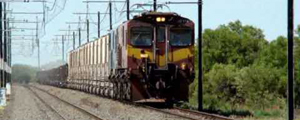
JOHANNESBURG — State-owned utility Transnet Freight Rail (TFR) says the railways infrastructure is already in place to facilitate the export of copper arising from the Democratic Republic of Congo (DRC) and Zambia through the Durban harbour, in South Africa.
Report by Miningweekly
Executive manager for international business Nyameka Madikizela tells Engineering News Online that the so-called “North-South Corridor” could use the existing network linking the DRC and Zambia to Zimbabwe through Victoria Falls and joining up with the South African system at Beitbridge.
“No additional infrastructure is required,” she averred, adding that the aim was to maximise the use of the existing network and rolling-stock capacity.
The proposal is in line with a Southern African Development Community ambition to bolster regional integration and reduce the cost of doing business in the territory through policy co-ordination, integrated planning and the development of cross-border infrastructure.
South Africa is also keen to consolidate Durban into what Public Enterprises minister Malusi Gigaba has termed a “mega-gateway port”, which could service domestic and regional freight corridors.
Transnet is hoping to bolster the freight handling capacity of Durban by facilitating the creation of a new R75 billion dig-out port on the site of the old Durban International Airport, which it purchased last year for R1,85 billion from the Airports Company South Africa.
Madikizela says it is premature to offer details on possible volumes, but indicates that consensus on the desirability for a “unified railway” plan has been reached between TFR, the National Railways of Zimbabwe, Zambian Railways, Société Nationale des Chemins de Fer du Congo, or SNCC, and privately-owned Beitbridge Bulawayo Railway.
- Chamisa under fire over US$120K donation
- Mavhunga puts DeMbare into Chibuku quarterfinals
- Pension funds bet on Cabora Bassa oilfields
- Councils defy govt fire tender directive
Keep Reading
The next milestone will be the signing of a formal agreement, scheduled for February, to be followed by the creation of a joint operations centre, probably in Bulawayo, Zimbabwe.
The agreement will precede moves to establish six committees, including one to investigate the investment and maintenance requirements associated with the proposed corridor.
The committees will also seek alignment on issues such as joint operations, new business development, safety, skills development and security.
“During the course of this year we should be able to give a better perspective on the cost implications to each railway operator,” Madikizela said.
There is no intention, at this stage, to establish a separate operational entity, or to pursue the development as a public–private partnership.
Instead, the aim is to ensure that the five existing railway organisations begin working together.
The initial focus will be on identifying constraints to the flow of cargo, as well as on operational inefficiencies, integrated planning, cargo monitoring and co-ordinating of future investment projects.











